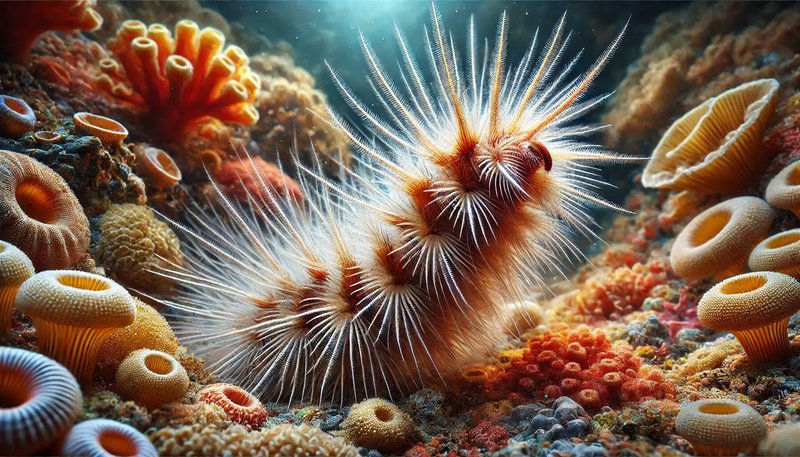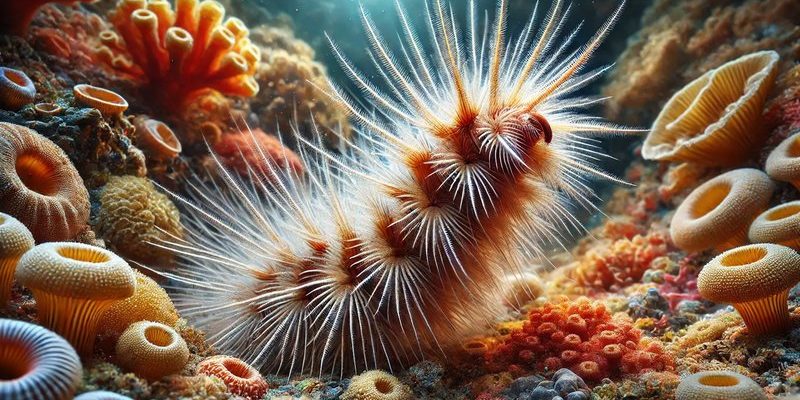
Bristle worms are often misunderstood. Some people think of them as pests, while others see them as beneficial scavengers. Let’s dive deeper into whether they can really damage your precious live rock or corals. Think of this as a friendly conversation over coffee, where we untangle the web of facts about these ocean-dwelling critters.
What Are Bristle Worms?
Bristle worms are a type of polychaete worm that usually hang out in the ocean, but they can also make their way into your aquarium. They typically have long, segmented bodies covered in bristles or setae, which can give them a somewhat hairy appearance. There are many species, but most can grow to around a few inches long.
While they may look a bit intimidating, bristle worms are usually harmless to larger fish. They thrive on decaying organic matter, which means they help keep your tank clean by munching on leftover food and detritus. However, the real question is how they interact with live rock and corals.
Do Bristle Worms Harm Live Rock?
When it comes to live rock, bristle worms can be either a boon or a bane. Live rock acts like a mini-ecosystem, hosting beneficial bacteria and critters. Bristle worms often find home there because it provides plenty of food and hiding spots. They help break down waste, which is fantastic for the overall health of your tank.
However, if your bristle worm population explodes, they might start to dig into the rock itself. This could disrupt the beneficial bacteria and minerals in the live rock, potentially leading to issues down the line. So, while they generally don’t harm live rock, an overpopulation can cause problems.
Signs of Overpopulation
You might be wondering, how do I know if I have too many bristle worms? Here are a few signs:
- Visible Excess: If you see them in swarms, especially in the daytime, it’s a sign you may need to manage their numbers.
- Disappearing Corals: If your coral starts to look unhealthy or is disappearing, bristle worms could be the culprits.
- Tank Imbalance: A spike in nutrients could indicate they’re overfeeding on waste.
If you notice these signs, it might be time to rethink how you manage your aquarium’s ecosystem.
Effects of Bristle Worms on Corals
When it comes to corals, bristle worms can be a bit more contentious. Most of the time, they don’t pose a direct threat to healthy corals. Instead, they play a crucial role in cleaning up the environment around them. But just like with anything in nature, balance is key.
You might be concerned that bristle worms could nibble on your corals. While they typically won’t attack healthy coral, they can feed on weak or dying corals. If your coral is struggling, bristle worms might take advantage of that situation.
How to Protect Your Corals
So, what can you do to protect your corals from potential harm? Here are some tips:
- Monitor Coral Health: Regularly check your corals for signs of stress or decay. Keeping them healthy is the first step in preventing bristle worm damage.
- Control Worm Population: If you notice an overabundance of bristle worms, consider reducing feeding or introducing natural predators, like certain species of fish.
- Maintain Good Water Quality: Healthy water conditions can keep your corals strong and less susceptible to bristle worm feeding.
When it comes to marine life, prevention is always better than cure.
Natural Predators of Bristle Worms
If you’re worried about bristle worms becoming too plentiful in your aquarium, you might want to consider introducing their natural predators. Several fish species love munching on bristle worms and can help keep their population in check.
Some effective natural predators include:
- Wrasses: Many wrasse species are known for hunting down bristle worms in your tank.
- Six-Line Wrasse: This fish not only eats bristle worms but also adds color to your aquarium.
- Some Triggerfish: These fish are also known to snack on bristle worms, but be cautious, as some can be aggressive.
Each predator has different care requirements, so be sure to do your research before adding them. It’s all about maintaining the balance in your tank.
How to Remove Excess Bristle Worms
If you’ve determined that bristle worms are getting out of hand, several methods can help you remove them. Here’s how to go about it:
1. **Manual Removal:** Using a pair of tweezers, you can gently pull out the worms. This method requires patience, especially since they can be quite squirmy.
2. **Traps:** You can buy or make a homemade trap using a simple bottle. Place bait like shrimp or fish scraps inside, and the worms will crawl in but have a hard time escaping.
3. **Predatory Snails:** Some snail species are known to eat bristle worms, so introducing them can be an effective and natural solution.
Remember, it’s essential to strike a balance. While getting rid of excess worms is important, killing all of them could disrupt your tank’s ecosystem.
So, can bristle worms damage live rock or corals? The answer is: it depends. Most of the time, these worms can actually be beneficial, helping with cleanup. However, if their population spirals out of control, they might pose a threat to both your live rock and corals.
Keeping a balanced aquarium ecosystem is key. Monitor the health of your corals, watch for signs of overpopulation, and consider natural predators if bristle worms become a nuisance. With a little attention and care, you can enjoy your underwater paradise without worry. Happy fishkeeping!

